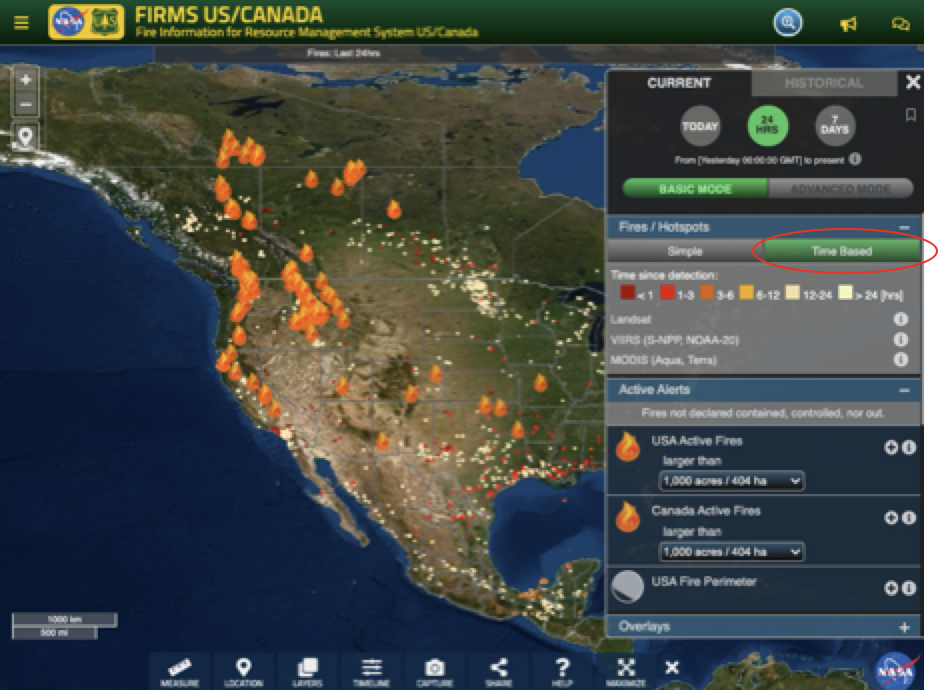Earlier this year, we highlighted the availability of Landsat 8 and Landsat 9 Operational Land Imager (OLI) imagery in the FIRMS map viewers. This imagery, provided by NASA's IMPACT project, enables a relatively high spatial resolution perspective of fire activity and post-fire effects. Similar to MODIS and VIIRS, we are now providing active fire data in FIRMS, generated from Landsat observations.
This new near real-time (NRT) Landsat Fire and Thermal Anomaly (LFTA) active fire product is the result of an ongoing collaboration by NASA LANCE/FIRMS, University of Maryland, USDA Forest Service and USGS EROS Data Center. The total elapsed time from satellite overpass to the availability of Landsat active fire detection data in FIRMS is 30 minutes or less. Users should note that these Landsat active fire detection data are provided much sooner than the Harmonized Landsat-Sentinel (HLS) imagery products, that are dynamically generated, and currently available in FIRMS approximately 2 days after acquisition.
Daily Landsat 8 and Landsat 9 OLI data for CONUS and most of Canada and Mexico are collected via direct readout by USGS EROS Data Center in Sioux Falls, South Dakota. At the request of NASA and the USDA Forest Service, USGS developed a near real-time data processing framework that provides Level 1 terrain corrected Landsat OLI imagery. This data is subsequently processed using NASA science data processing algorithms to generate Level 2 30 meter resolution active fire data.
How does Landsat active fire data compare with MODIS and VIIRS active fire data?
Landsat active fire data is more than 1,000 times more resolute than MODIS and more than 160 times more resolute than MODIS and VIIRS, respectively. The algorithm routinely detects fires as small as a few square meters, or smaller, providing spatially explicit detail of location and extent of fire activity at the time of satellite overpass. Active fire fronts, as well as scattered smaller fires within the fire perimeter are routinely detected. However, these relatively high spatial resolution data have a lower temporal resolution compared to the daily observation frequency afforded by MODIS and VIIRS. Between both Landsat OLI instruments, areas in the lower to mid latitudes are imaged every 8 days (please see the related NASA FIRMS blog entry that describes the characteristics of different satellite sensors and their effects on the spatial extent of daily active fire data). The temporal resolution of Landsat data can be increased though collection of nighttime Landsat 8 and Landsat 9 imagery for targeted areas when it can feasibly be done within the confines of current Landsat science and mission priorities.
Viewing the LFTA in FIRMS
The Landsat active fire data can be viewed in both FIRMS global and FIRMS US/Canada. The LFTA are displayed in Basic and Advanced Mode.
To display the Landsat active fire detections by time since detection, select the "Time Based" option.

To distinguish the Landsat active fire detections from other active fire detections (such as MODIS and VIIRS), select the "Advanced Mode" and "Custom" and select the "+" icon next to the fire detections you want to change. Select the drop down arrow to the right of the color and a color wheel will appear. Select a color and press apply.

For more information see the FIRMS blog entry on How to customize the fires displayed in FIRMS